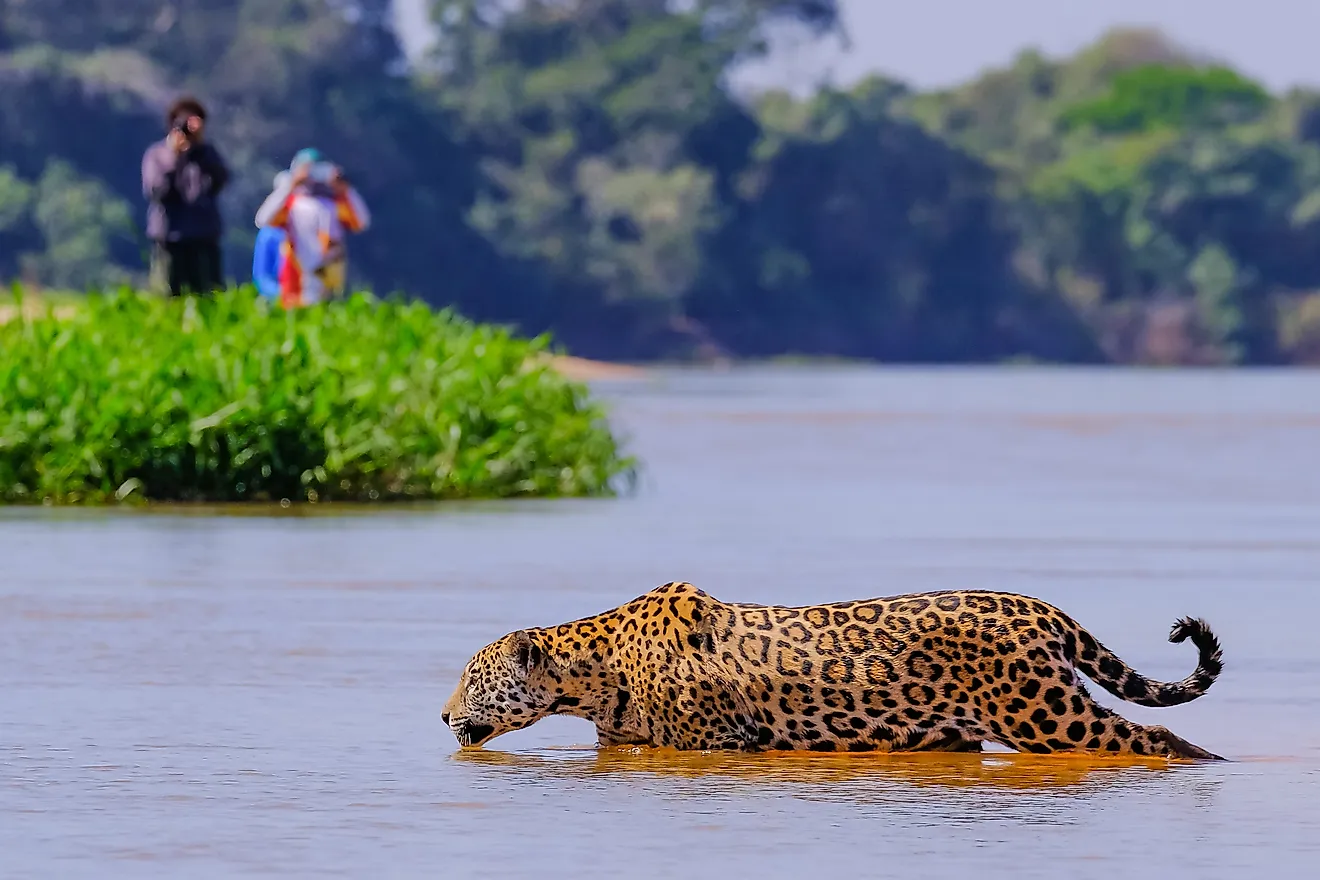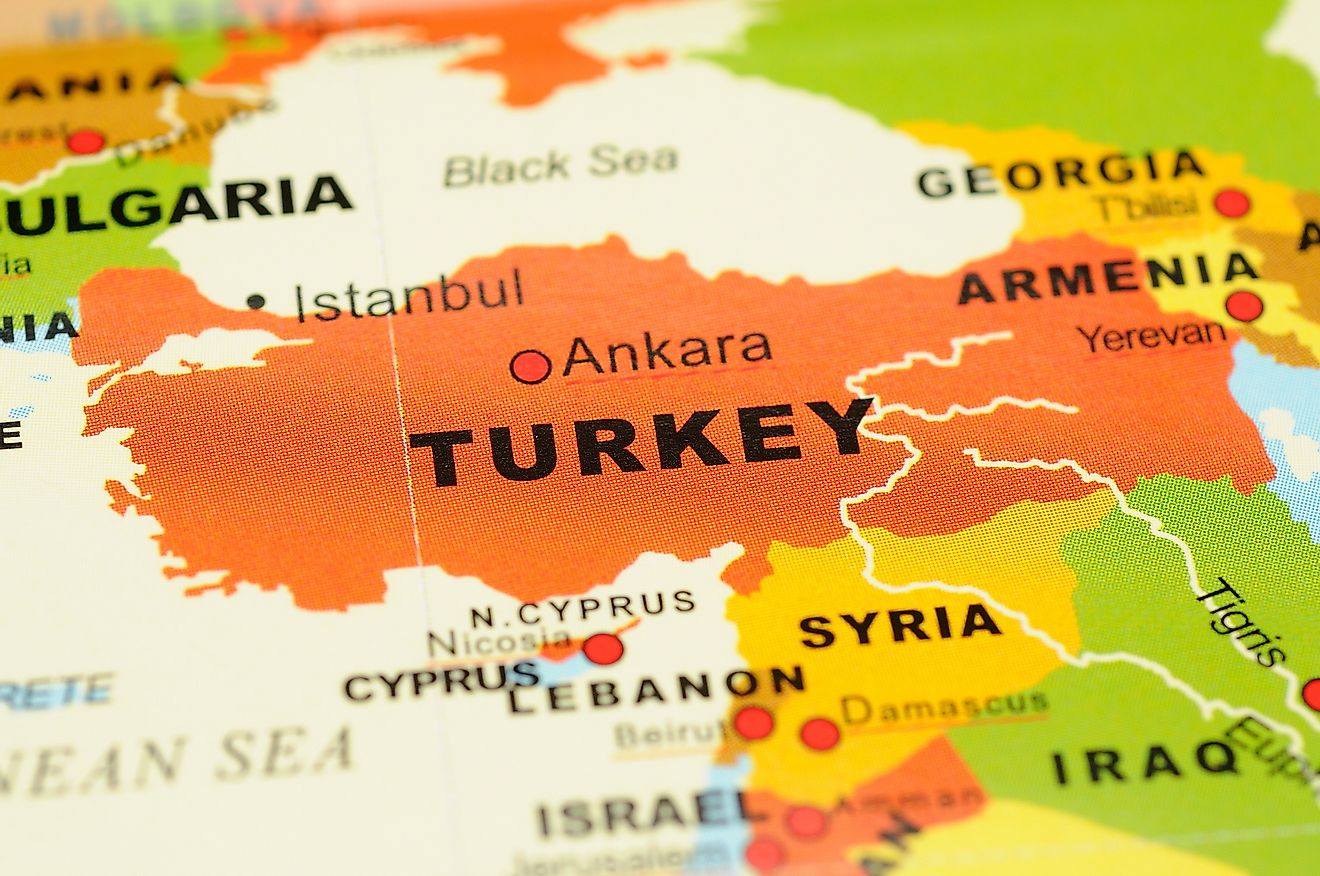Astounding Facts About A Volcanic Landscape
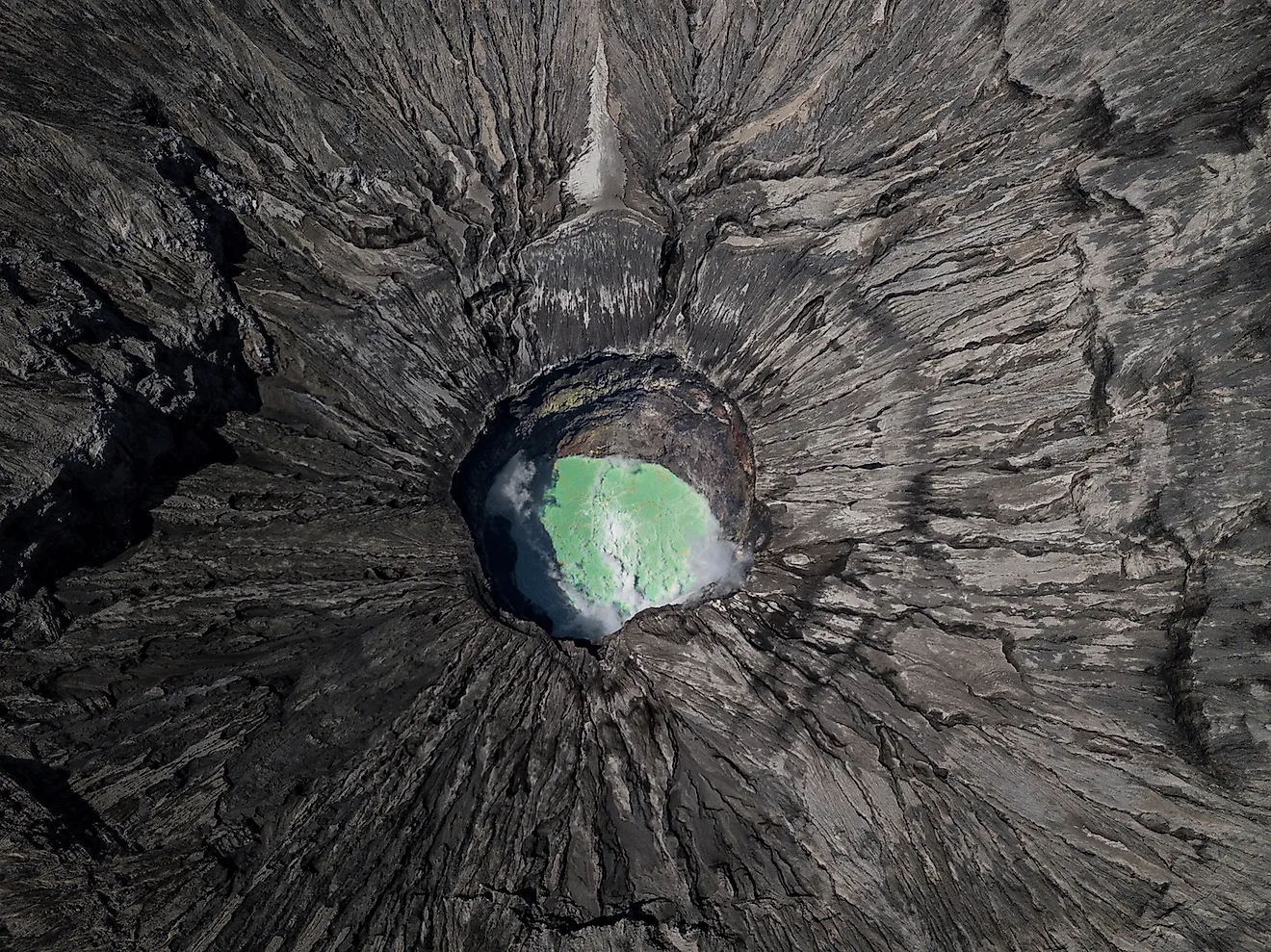
- Volcanic landscapes can store geothermal energy underground that can be harnessed to generate electricity.
- Old Faithful is a geyser in America's Yellowstone National Park that spews steam and water about once every 65 minutes.
- Volcanoes can be destructive, but they can also be gift, leaving extremely fertile soil in their wake.
Amazingly, volcanic landscapes have created more than 80% of all the surfaces on Earth. These are nature’s architects, and they are currently present on all of our planet’s seven continents. Volcanoes create mountains, valleys, plateaus and plains, and while they are dangerous while active, they also provide humanity with some of the most fertile land in existence. There are currently approximately 1,500 volcanoes active on Earth, some of which are on land, and others on the ocean floor. Italy is thought to be home to the oldest volcano, Mt. Etna, which is said to be about 350,000 years old.
Volcanoes can erupt, spewing ash through the atmosphere, or by spreading hot boiling lava down their slopes, destroying everything in their path. What does a volcano leave behind once it has blown its top? Here is a look at the majestic landscapes surrounding volcanoes, how they are constructed and what they have to offer.
10. The thickness of the magma erupting from a volcano affects its shape.
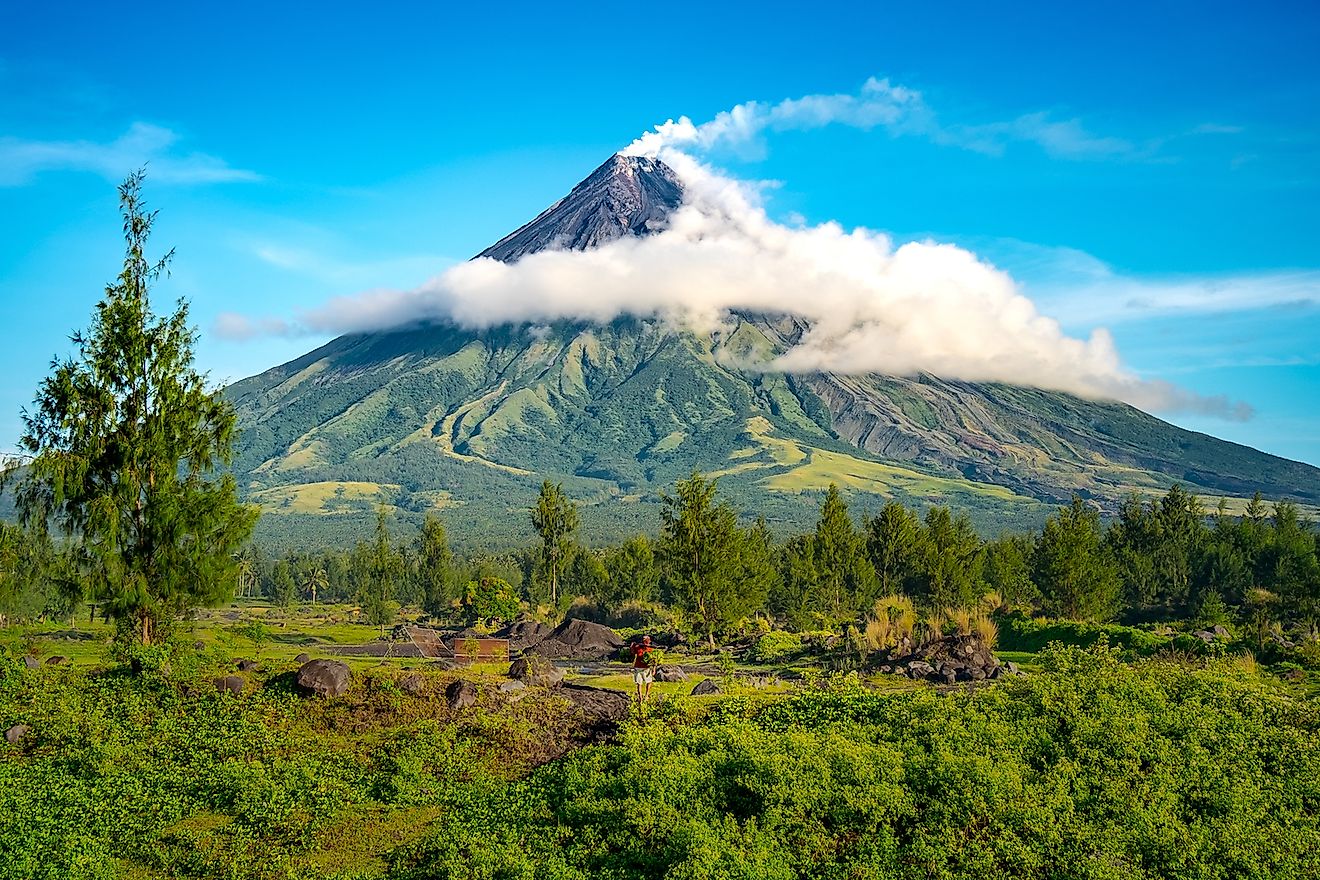
Magma is the molten or liquid rock that resides inside a volcano. Once the volcano erupts and sends this stuff spewing, it is called lava. Each volcano is unique and the thickness or viscosity of the magma inside is something that helps determines what shape the volcano will have. Volcanoes that have steep, sudden slopes tend to have been formed from viscous or thick, sticky magma beneath its surface. Those that are flatter with more gradual slopes have been made by more liquid-like magma that flows freely.
Lava is dangerous stuff. When it erupts from a volcano and is fresh, it is said to be between 1,300° F and 2,200° F (700° and 1,200° C). As it flows down the volcano, it burns or melts everything it comes in contact with.
9. As magma cools, it turns black.
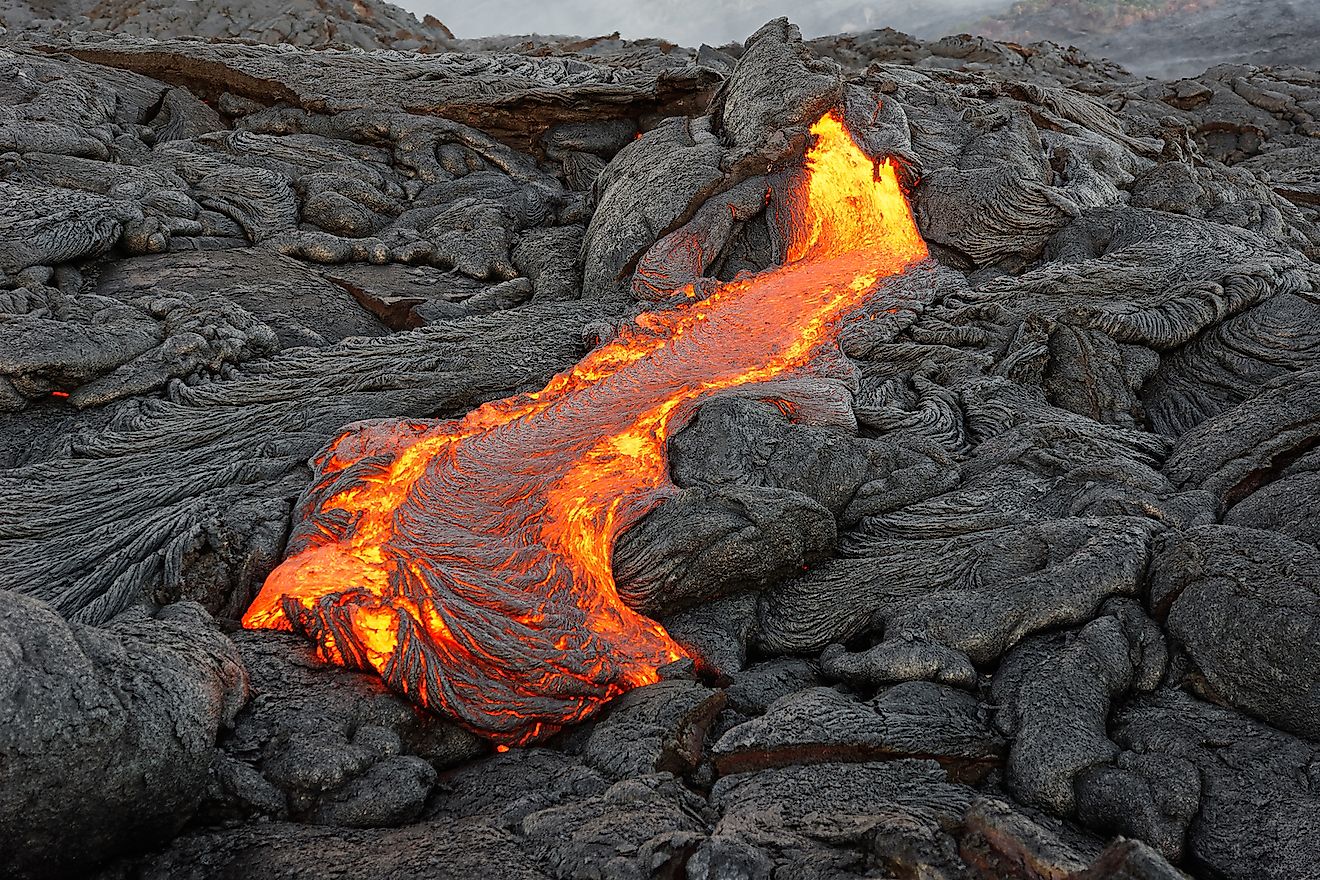
Lava is a liquid when it flows down a volcano and spreads to the surrounding countryside. At this point it is a fiery red, orange and yellow color. Once it cools, and crystalizes, lava turns into igneous rock that is often black. The word “igneous” comes from the Latin word “ignis”, which means fire. Igneous rocks are categorized into four main groups, depending on how much silica they contain. These groups are acidic, intermediate, basic, and ultramafic. Acidic rocks have the highest silica content, and ultramafic the lowest. Pumice is also a volcanic rock, and it is formed from lava that is full of gas. This rock is so light that it can float on water.
8. Volcanic landscapes fall into two broad categories: cones and fields of cones, and plateaus and plains.
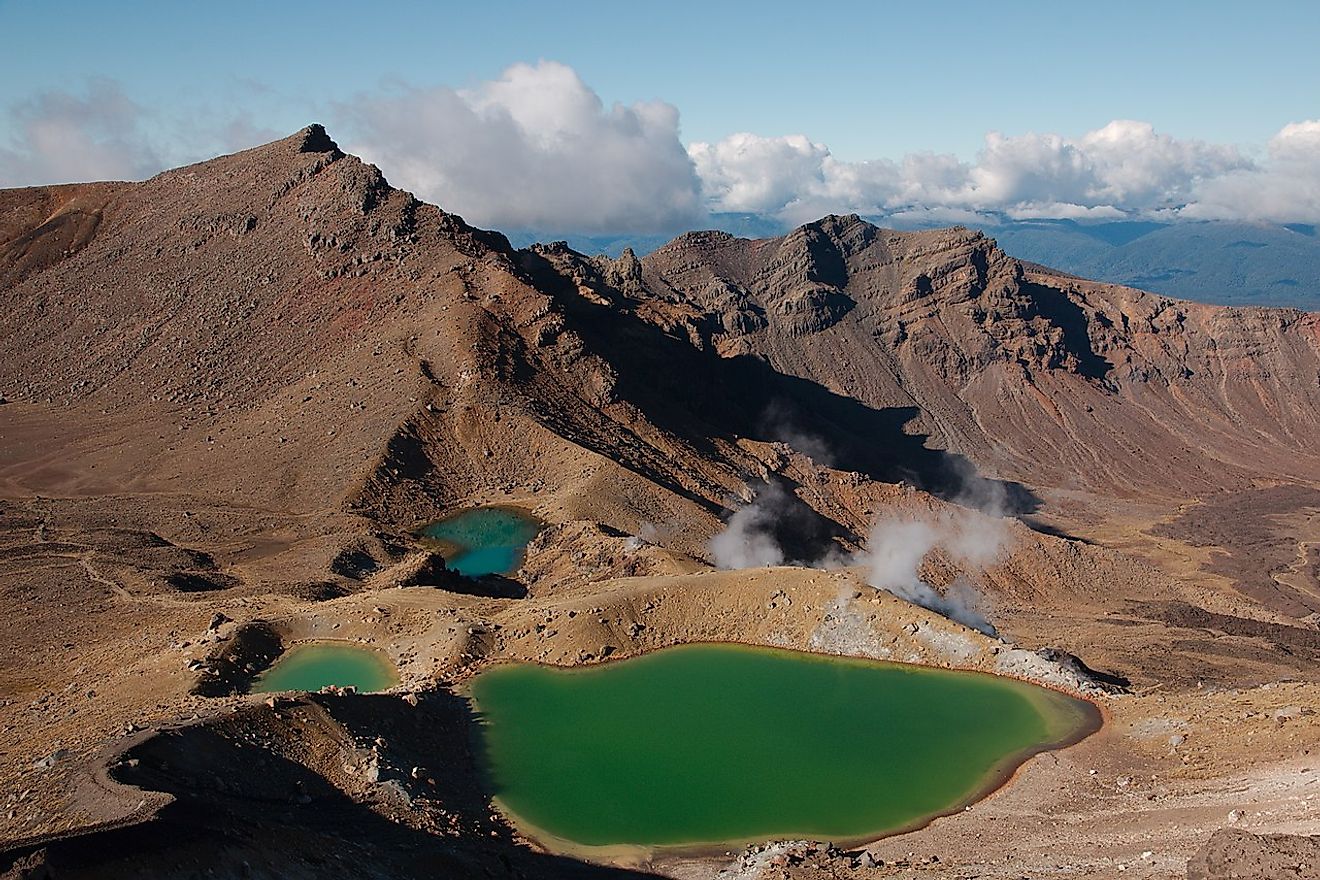
Volcanic landscapes can be beautiful- just look at Hawaii for confirmation of this fact. When it comes to analyzing their geography, you can say they are either made of cones and fields of cones, or a bunch of flat plateaus and plains.
Volcanic cones are shaped like triangular hills. They are what we traditionally think of when imagining a volcano, and they are made from volcanic material that has piled up around the volcano’s opening in the Earth’s crust. There exist many types of volcanic cones including composite cones, cinder cones, spatter cones, and tuff cones.
An example of a volcanic plateau is the North Island Volcanic Plateau covering most of the central part of the North Island of New Zealand. If you travel to Australia, you can encounter the Southern Volcanic Plain in Victoria, previously known as the Victorian Volcanic Plain, extending to South Australia near Mt. Gambier.
7. Volcanic hot springs can be too hot to handle.
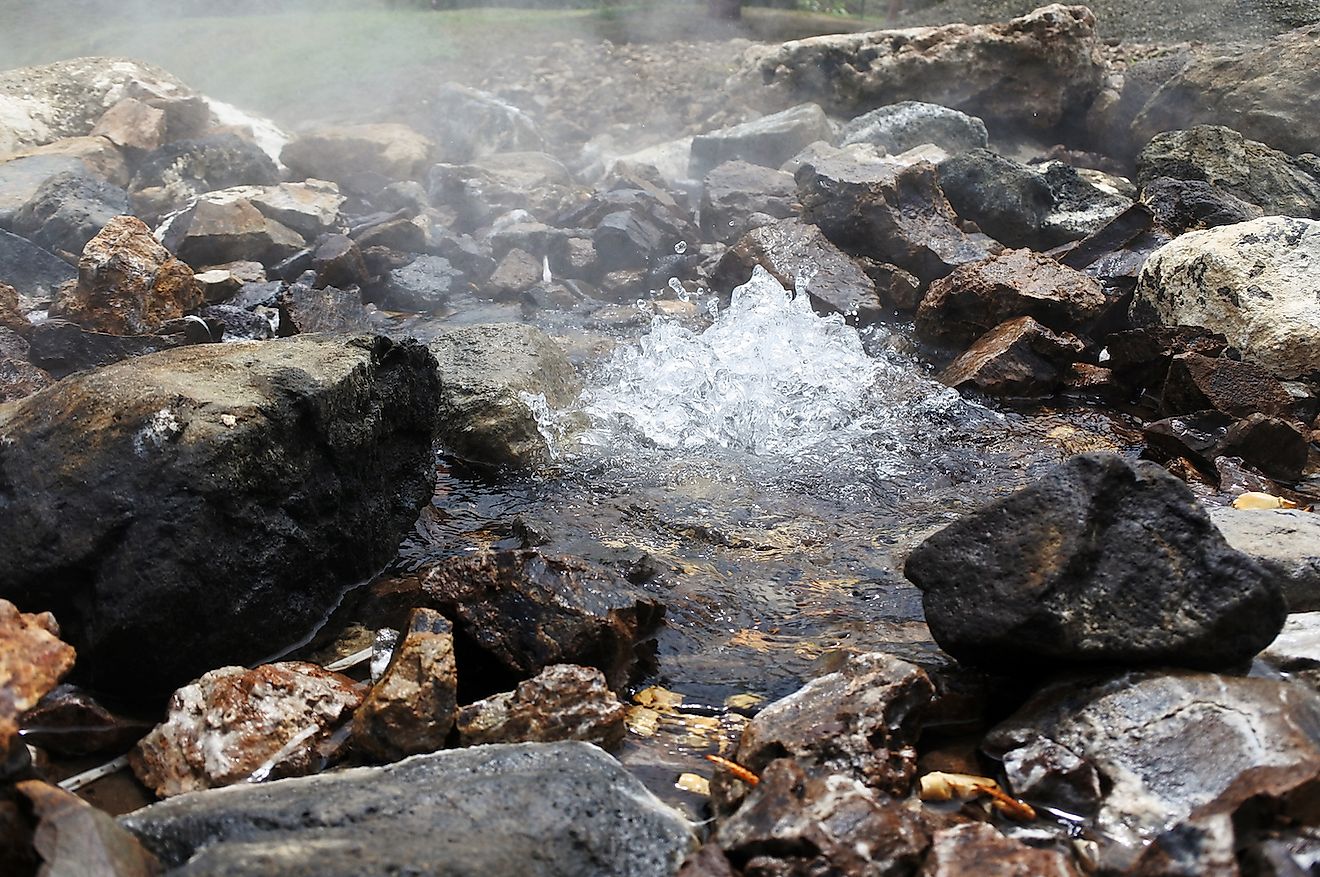
Volcanic hot springs occur in active volcanic zones when heat generated below the Earth’s surface-geothermal heat-comes in contact with rock and water. Volcanic hot springs differ from other hot springs. They can sometimes produce superheated water that is so hot, you would hurt yourself or even die if you were submerged in it.
6. Volcanic landscapes can have constant explosions of water called geysers.
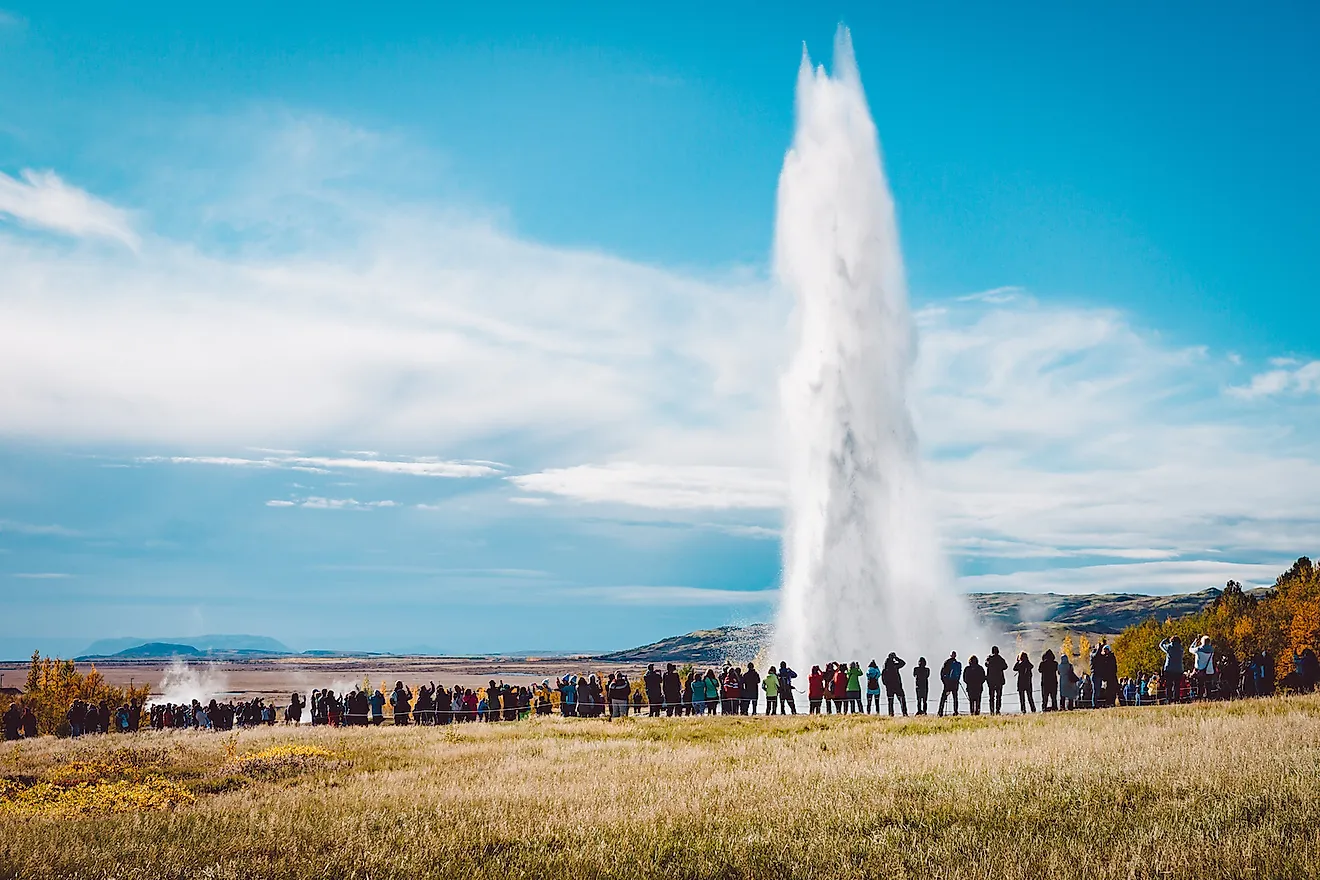
Another characteristic of volcanic areas are geysers. These occur when groundwater fills up in underground cavities that are heated by magma. Sometimes this water suddenly becomes steam and expands rapidly. When this happens, a column of hot water and steam suddenly bursts from a natural vent in the ground, rising up into the air like a small explosion. A geyser can look like a large water fountain but it is hot, and somewhat unpredictable.
5. Volcanic areas can emit dangerous gases through something called fumaroles.
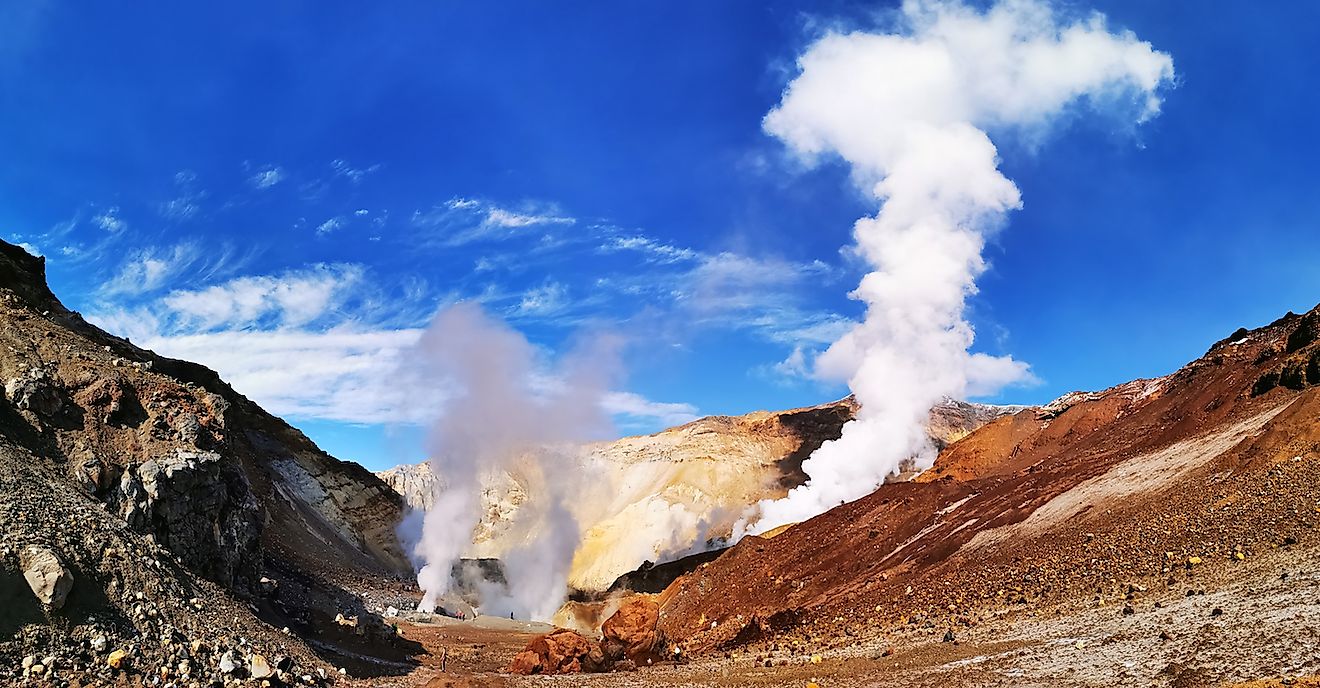
It is not just lava, ash, hot water and steam that volcanic landscapes project.
Dangerous gases can result when hot magma runs through underground water. When hot magma meets water, it can create steam that carries volcanic gases like hydrogen sulfide (H2S) to the surface through vents and fissures. This release is called a fumarole. Fumaroles tend to occur near the end of volcanic activity, as the magma underground cools down, and can emit suffocating levels of carbon dioxide and acidic sulfide.
4. Rock can dissolve into mud.
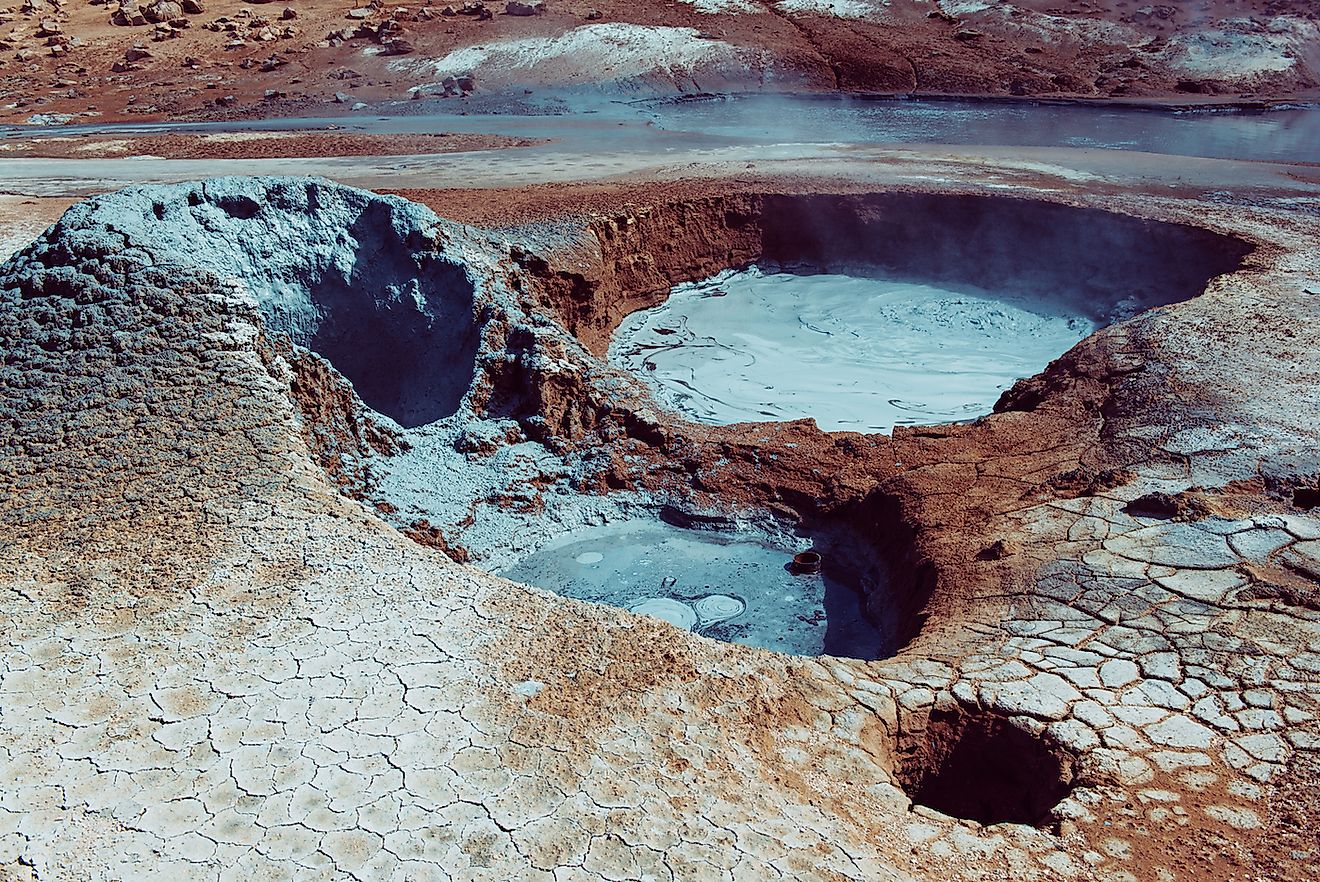
It is no wonder that ancient peoples thought the gods were behind volcanic activity. Mudpots occur in volcanic areas where geothermal water mixes with mud and clay. When this happens, acid and bacteria in the volcanic water can actually be harsh enough to dissolve nearby rock, resulting in thick puddles of bubbling mud.
3. When a volcano erupts, the ash and gas can cool the area.
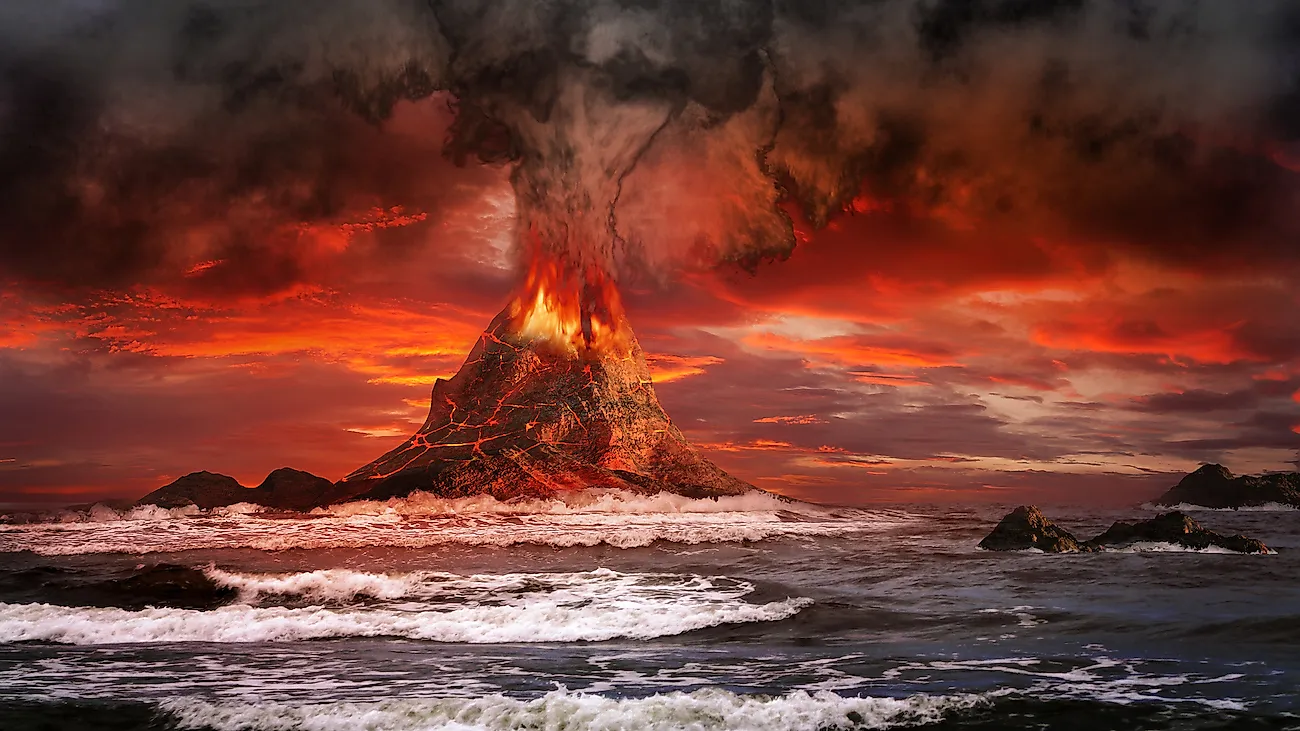
We tend to equate volcanoes with heat, but they can also make things colder. When a volcano spews a lot of ash into the atmosphere, it can block out the sun, causing the environment to cool down. Most of these particles fall to the ground via rain in the days following the eruption, but some stay in the air and travel around the world. These tiny particles can stay aloft for months, cooling down large areas on Earth before they finally rain down.
2. The land surrounding a volcano can be very fertile.
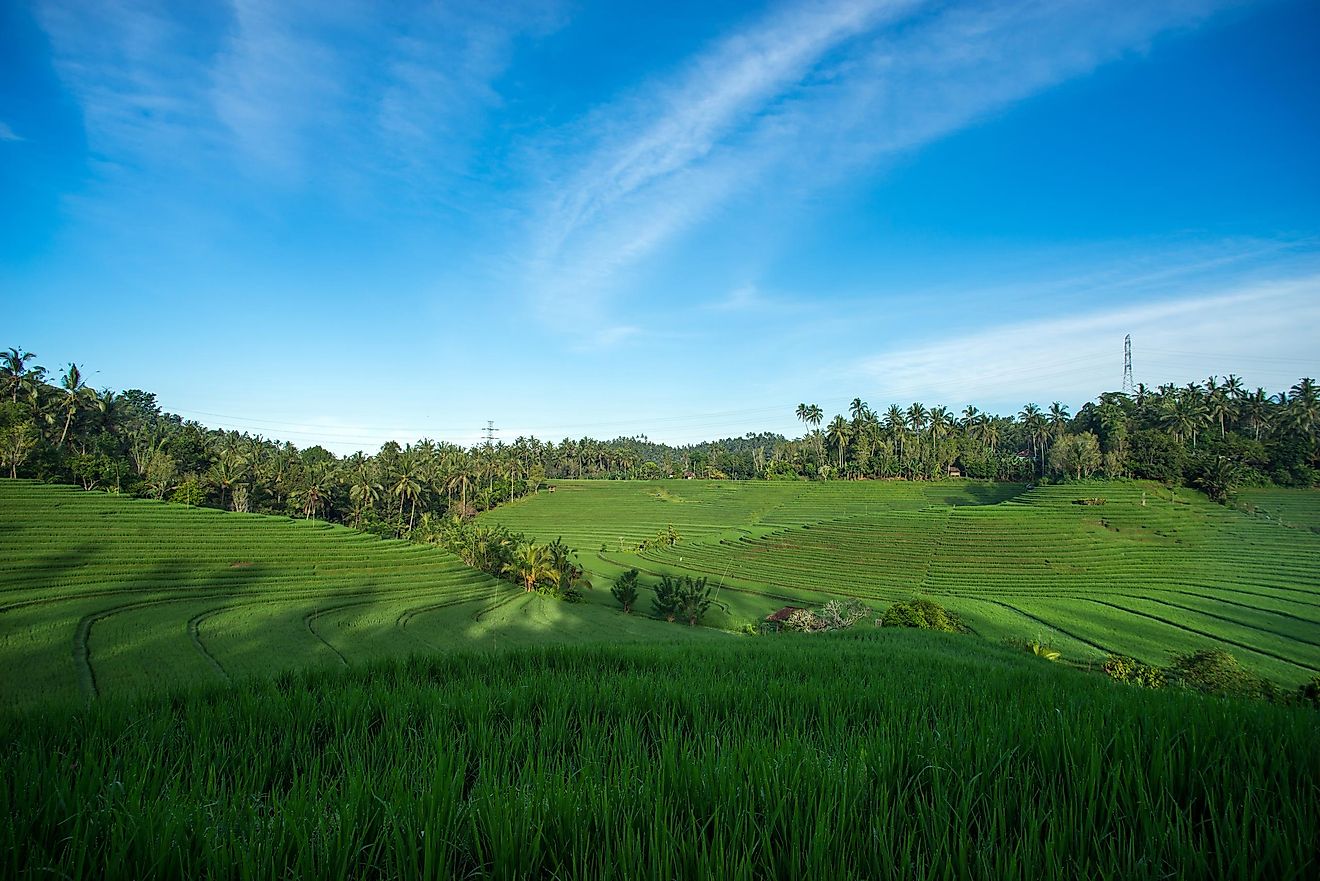
Volcanoes can be both destructive and constructive. After an eruption ceases and the magma cools to rock, the ash and lava can sometimes break down. When this happens, the soil becomes extremely fertile, packed with rich mineral deposits. Some experts say that people have kept on living near active volcanoes throughout history in part because the land surrounding them can be so good for growing crops, as in parts of Italy, Mexico, and elsewhere.
1. The heat of a volcano can be used to generate electricity.
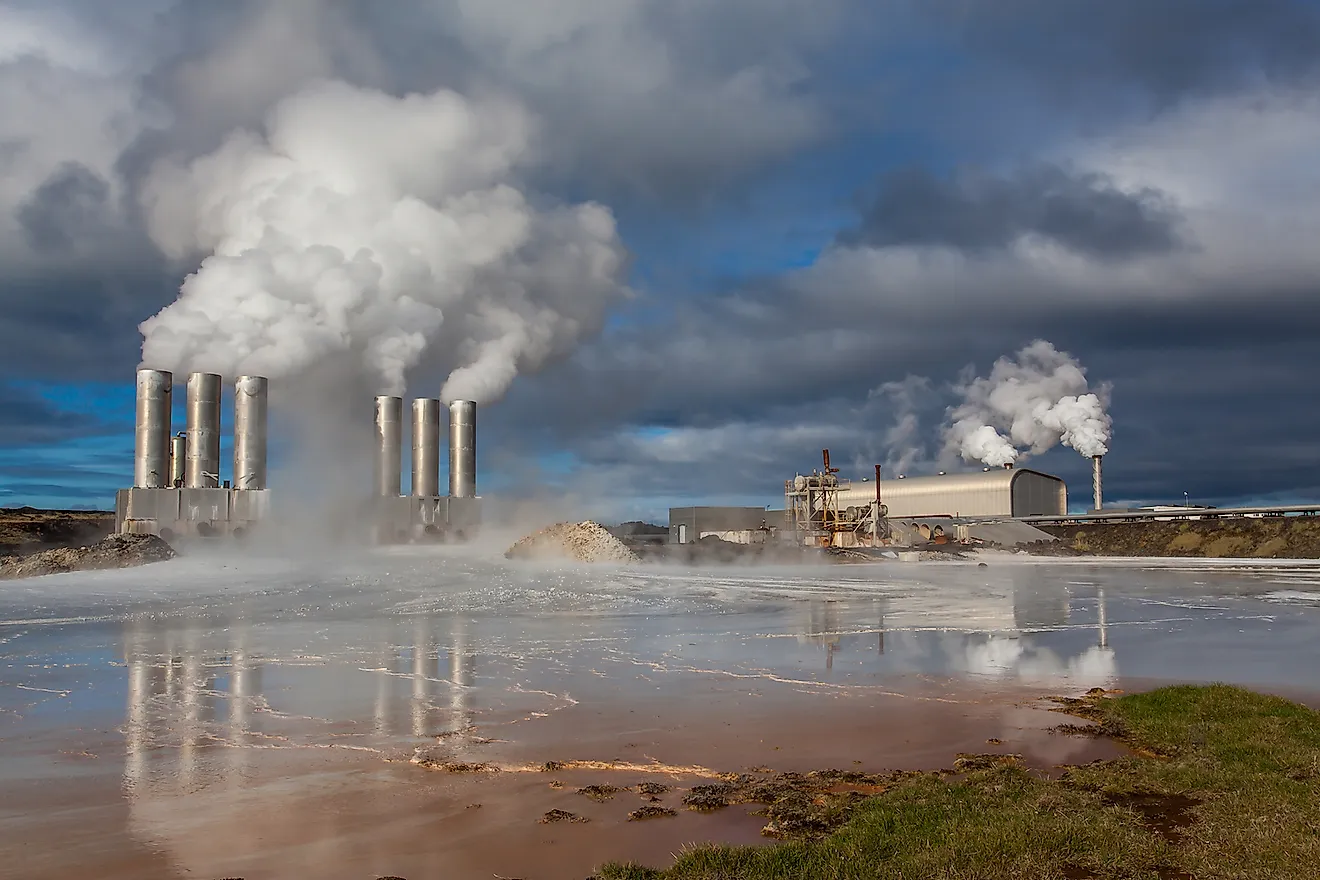
The geothermal energy created underground by volcanic activity can be harnessed. According to Britannica.com, some geothermal steam wells can produce 25 megawatts of thermal power through their hot water and steam. This can be used to drive turbine generators and produce electricity. In places like Iceland, geothermal reservoirs are routinely tapped as an energy source. In this way, volcanic landscapes are the gift that keep on giving!
